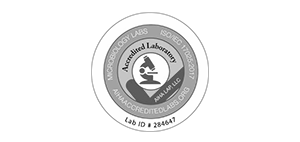
When Should You Be Concerned About Mold?
Mold is a common issue that affects many households across the United States. While some types of mold are harmless, others can pose a serious risk to your health and home. This makes it crucial to be aware of the signs of a mold infestation and take action as soon as possible to prevent it from spreading.
If you notice any signs of mold growth in your home, it’s important to take it seriously. Ignoring it could lead to potential health problems for you and your loved ones, such as respiratory issues, allergies, and other health complications.
Here are some common signs that indicate a mold infestation in your home:
- Visible mold growth on walls, floors, or ceilings
- Damp or musty odors
- Frequent allergy symptoms
- Water leaks or water damage
- Condensation on windows or walls
Being able to identify these signs early on can help you take prompt action to prevent mold from spreading further. By keeping an eye out for these signs and taking action as soon as possible, you can protect your home and your health from the harmful effects of mold.
Key Takeaways:
- Don’t ignore signs of mold growth in your home
- Early detection and prevention are crucial for minimizing health risks
- Common signs of mold infestation include visible growth, damp or musty odors, and water damage
- Being able to identify these signs is essential for taking prompt action
- By taking action early on, you can protect your home and health from the harmful effects of mold
Understanding the Risks of Mold
When it comes to mold, it’s not just the unsightly appearance and musty smell that you should be concerned about. Exposure to mold can lead to potential health problems, particularly for those with allergies and respiratory issues.
The inhalation of mold spores can cause symptoms such as sneezing, coughing, and watery eyes. In more severe cases, it can trigger asthma attacks and other respiratory problems. Prolonged exposure to mold can also lead to the development of infections, particularly in individuals with weakened immune systems.
It’s essential to take mold infestations seriously and seek prompt removal to prevent the potential health risks associated with exposure. If you’re experiencing any of the symptoms mentioned above, it’s best to consult your doctor and take action against mold immediately.
Image source: https://seo-writing.ai/32_6.png
Stay vigilant and keep an eye out for any signs of mold growth in your home, particularly in areas with high humidity levels such as basements, bathrooms, and kitchens.
Next, we’ll explore how to identify signs of mold to help you take action against it and prevent future infestations.
Identifying Signs of Mold
If you suspect that your home has a mold problem, it’s essential to identify the signs of mold quickly. Being able to recognize these signs is crucial for early detection and mitigation of potential health risks for you and your family. In this section, we’ll explore the common signs of mold and how to identify them.
Musty Odors
One of the most common signs of mold is a musty odor. If you notice a strong, earthy smell in your home, this could be an indication of the presence of mold. This odor is often associated with dampness or moisture. You should investigate the source of the smell and take appropriate action.
Visible Mold Growth
Visible mold growth is a clear indication of a mold problem. Mold can grow anywhere with moisture, including on walls, ceilings, and floors. If you see any signs of mold growth in your home, it’s essential to address the issue immediately. Mold colonies can spread quickly, and prompt action can prevent expensive and potentially dangerous remediation.
Water Damage
Water damage is a leading cause of mold growth. If you’ve recently experienced water damage due to flooding, leaking roofs, or broken pipes, you should inspect your home for any signs of mold. Inspect areas that have been affected by the water damage, including walls, ceilings, and floors, and take immediate action if you find any signs of mold growth.
Allergic Reactions
Mold can cause allergic reactions and other health problems. If you or anyone in your home experiences allergy-like symptoms, such as sneezing, coughing, or itchy eyes, it could be a sign of mold exposure. If symptoms persist or worsen, seek medical attention as soon as possible.
Now that you know how to identify the signs of mold, it’s essential to take prompt action if you suspect a mold infestation in your home. The next section will explore effective practices for removing mold from your home.
Taking Action against Mold
Once you have identified mold in your home, it’s essential to take prompt and effective action to remove it. While some DIY methods may work for minor mold growth, severe infestations require professional mold removal services. It’s crucial to choose the right mold removal practices to ensure a safe and healthy environment.
One effective mold removal practice is to physically remove the mold. This involves using a HEPA-filtered vacuum, gloves, and protective clothing to remove the mold-infested materials. You may also consider using a mold-removing solution to clean the affected areas thoroughly.
If the mold growth is severe, it may be necessary to replace the affected materials entirely. For instance, if the mold has affected the drywall, it’s best to remove and replace it. This ensures that all the mold is gone, and there is no risk of future growth.
It’s crucial to take precautions when removing mold, such as wearing protective gear like gloves, goggles, and a mask. This prevents exposure to mold spores that can cause health problems.
Remember to also address the source of the moisture that caused the mold growth. If you don’t address the underlying moisture issue, the mold will likely return, and all your efforts will be in vain.
Professional mold removal services may be expensive, but they are necessary for severe mold infestations. If you decide to hire a professional mold removal company, ensure that they are licensed and experienced in handling mold removal effectively.
Preventing Mold Growth
Mold prevention is key to maintaining a healthy living environment. By following these mold prevention tips, you can significantly reduce the risk of mold infestation in your home:
- Control humidity levels: Keep your home’s humidity level below 60% by using air conditioners and dehumidifiers. Fix any leaks or water damage promptly to prevent moisture buildup.
- Improve ventilation: Use exhaust fans in bathrooms and kitchens to reduce moisture buildup. Open windows and doors to increase air circulation.
- Regular cleaning routines: Clean and dry any damp or wet areas immediately. Use mold-resistant products when cleaning.
- Inspect your home regularly: Check for any signs of leaks, water damage, or mold growth. Address any issues promptly.
- Maintain your HVAC system: Regularly replace filters and have your system inspected and cleaned by a professional.
By implementing these mold prevention practices, you can minimize the risk of mold infestation in your home and ensure a healthy living space for you and your loved ones. Remember, prevention is always better than cure!
Conclusion
Keeping your home mold-free should be a top priority for you and your family. By understanding the risks associated with mold exposure and how to identify signs of mold infestation, you can take prompt action to prevent it from spreading. Effective mold removal practices are essential for maintaining a safe and healthy living environment. Remember to prioritize prevention measures, such as controlling humidity levels, improving ventilation, and regular cleaning routines.
Don’t wait until you notice visible signs of mold growth. Stay proactive and vigilant. Early detection and prevention are key to avoiding potentially hazardous situations. By following the tips and guidance provided in this article, you can safeguard your home and your health from the harmful effects of mold. Take action today and enjoy a mold-free, healthy living space!
FAQ
When should you be concerned about mold?
You should be concerned about mold when you notice signs of a mold infestation in your home. These signs may include a musty odor, visible mold growth, or water damage. Mold can cause health problems and damage to your property, so it’s important to take action if you suspect mold is present.
What are the health risks of mold exposure?
Mold exposure can lead to various health problems, especially for those with allergies or respiratory conditions. It can trigger symptoms such as coughing, wheezing, sneezing, and itchy eyes. Prolonged exposure to mold may even cause more serious respiratory issues. It’s important to address mold infestations promptly to protect your health.
How can I identify signs of mold in my home?
There are several common signs of mold infestation to look out for. These include the presence of visible mold growth, a musty odor, water stains or discoloration on walls or ceilings, and an increase in allergy-like symptoms when you’re at home. If you notice any of these signs, it’s recommended to conduct a thorough inspection for mold.
What should I do if I find mold in my home?
If you find mold in your home, it’s important to take action to remove it and prevent further growth. For small areas of mold, you can typically clean it yourself using a mixture of bleach and water or specialized mold cleaning products. However, for larger mold infestations or if you’re unsure how to safely remove the mold, it’s best to hire a professional mold remediation service.
How can I prevent mold growth in my home?
There are several preventive measures you can take to minimize the risk of mold growth in your home. These include keeping humidity levels low, ensuring proper ventilation in areas prone to moisture, promptly repairing any leaks or water damage, and regularly cleaning and drying areas that are susceptible to mold, such as bathrooms and basements.
Is mold always visible?
No, mold is not always visible. Mold can grow behind walls, beneath carpets, or in other hidden areas where moisture is present. Additionally, some types of mold may appear as a discoloration or staining on surfaces that is not immediately recognizable as mold. If you suspect mold but cannot see it, it’s recommended to consult a professional for a thorough inspection.







